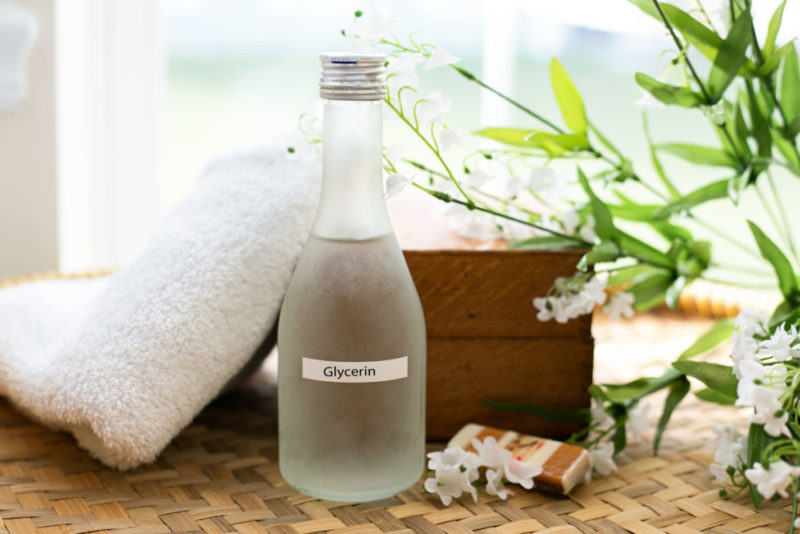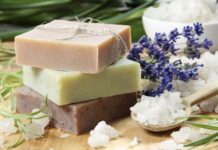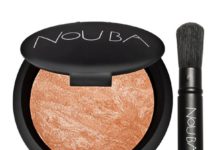Glycerin in cosmetics is an extremely popular component, without which funds for skin, hair and oral cavity can not do. A similar trihydric alcohol is used both in the process of industrial production and in the manufacture of home cosmetics. Find out why this component is so in demand in the beauty industry, what its varieties exist. And also figure out whether this is a completely safe and indispensable tool in the struggle for youth, whether there are alternative options.
Material Content:
The use of glycerin in cosmetics
This trihydric alcohol is highly soluble in water, allowing you to get various mixtures and suspensions. In cosmetics, it is primarily used to stabilize and form the desired consistency of the composition. Glycerin copes with moisture retention in the skin and hair. But like any chemical component, glycerol can cause both benefit and harm.
Among the positive properties of glycerol, the following factors should be noted:
- Neutral smell and color. By the way, this substance tastes quite sweet, due to which it is massively used in both the food and tobacco industries.
- Hygroscopicity. It manifests itself in the ability of 1 molecule with 3 atoms to attract up to 10 water molecules and hold them not only in the surface, but also in the deeper layers of the skin.
- Easy solubility in water. In cosmetology, it is precisely this ability of glycerin that is valued that allows saturating the resulting composition with essential oils.
- Chemical resistance. It provides the ability to use trihydric alcohol to create various suspensions with a long shelf life.
- Protective functions.The film created by glycerin on the surface of the dermis prevents harmful substances from entering the skin.
In modern cosmetology, glycerol is one of the most commonly used components. In popularity, it is second only to water and flavorings.
You can meet this component not only in creams, but also in soap, shampoo, lipstick, lotion, deodorant, hair spray and many other products.
Diluted glycerin with a high degree of purification is an almost harmless component in cosmetic formulations, but it also has a number of drawbacks, which we will discuss in more detail later.
Why use the tool
Most often, you can hear about the presence of glycerin in the cream, but it is used not only in face cosmetics, but also in the following products:
- Deodorant, perfume, perfume water.
- Shampoo, mask, hair conditioner.
- Lipstick and moisturizing lip balm.
- Foam and bath salt.
- Lump and liquid soap, shower gel.
- Decorative cosmetics: carcass and eyeliner, powder and tonal foundation, blush and shadow.
- Dental and oral care product.
- Micellar water, lotions, tonics.
- Cream for any part of the body.
In all these cosmetic products, glycerin is primarily used to moisturize and retain moisture in the dermis or hair. And also this universal alcohol is a stabilizer of mixtures and a way to reduce the viscosity of other ingredients.
The bulk of glycerin is synthesized from petroleum products, but can also be obtained from natural components - vegetable and animal fats.
Such a substance is better, but also just as expensive. The use of alcohol synthesized from natural raw materials significantly increases the price of cosmetics. To recognize such products, look for “vegetable glycerin” or “vegetable glycerin” on the label.
Application in home cosmetology
Glycerin is a fairly common and inexpensive tool that can be easily purchased at almost any pharmacy. This makes this component popular not only in industry, but also in home cosmetics.
Most often it is added to the composition:
- face masks;
- hair balm;
- hand creams;
- handmade soaps.
To really achieve high-quality hydration of the epidermis or hair, and not harm your health, carefully read the packaging of the pharmacy product. Choose only high-grade, high-purity glycerin. And also give preference to alcohol of vegetable or animal origin, since chlorine is rarely used in the technology of its production.
Possible harm and contraindications
Despite all the benefits of trihydric alcohol in cosmetic products, this component also has a number of contraindications. It is not recommended to abuse funds based on it for people with individual intolerance. If a chlorine-based technology was used in the production of synthetic glycerol, such a product is not shown to young children and people allergic to this component.
And also the use of glycerin can cause unwanted effects:
- A high concentration of alcohol with a low degree of purification can burn the skin and provoke rashes on it.
- Getting from the air into the respiratory tract, large molecules irritate the mucous membrane. This occurs during aerosol spraying or during the evaporation of acetone from nail polish.
- Penetrating into the digestive tract with a mouthwash, the substance causes irritation to the mucosa. And in the intestines, absorbing moisture, provokes dehydration.
It is possible to get harm from such alcohol if you use low-quality products or use them for other purposes.
Mineral oils can serve as glycerin analogues in cosmetics. As clinical studies have shown, such products are more harmful to human skin.













